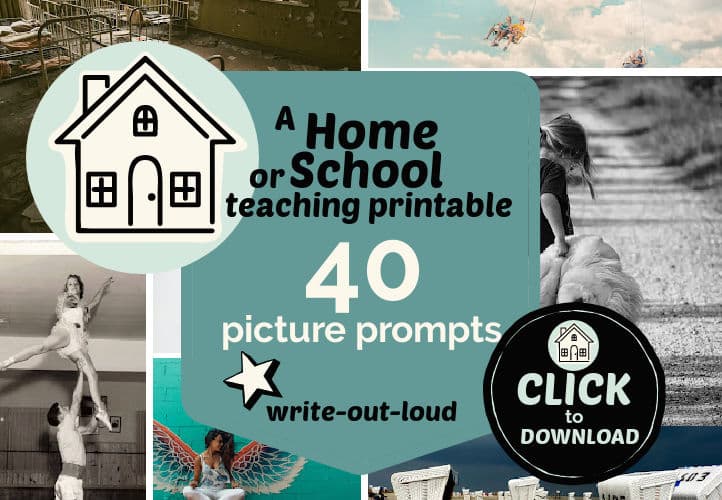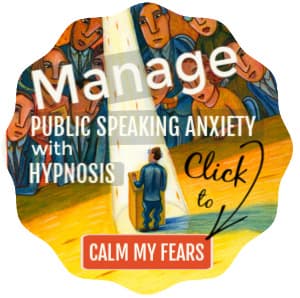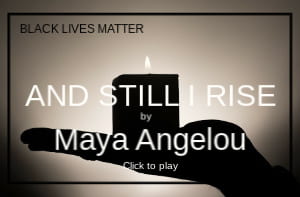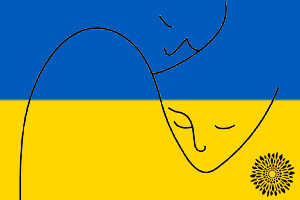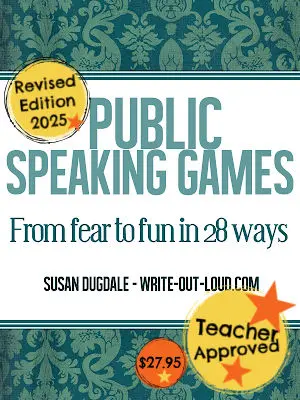- HOME ›
- Activities and games ›
- Picture prompts
Picture prompts for impromptu speeches
40 quality images to use as speech or story starters
By: Susan Dugdale
Have you ever used picture prompts as starters for impromptu speeches?
No? Then you'll be delighted to discover just how effective using an image can be.
That familiar saying, 'a picture speaks a thousand words', is backed by thousands of centuries of story telling. The first verifiable instance we know about are the drawings found on the walls of pre-historic caves.
(Read this UK Guardian article if you'd like to find out more: Earliest known cave art by modern humans found in Indonesia.)
We are not so different from our ancestors. Pictures fulfill exactly same function for us as they did for them. They connect. They invoke feeling and they tell stories.
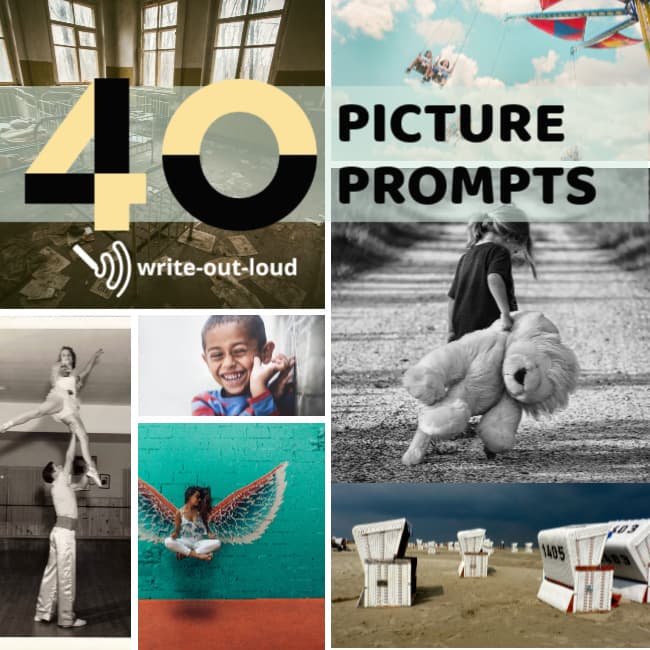
40 printable picture prompts
Along with guidelines for five activities using pictures as starters, I've included a printable to download of 40 quality images*. You'll find that at the bottom of the page.
Let the story telling begin!
* All the images come from two copy-right free image sharing sites: Pixabay and Unsplash. Thank you!
How to begin using an image to tell a story
Use these classic questions as a starting point.
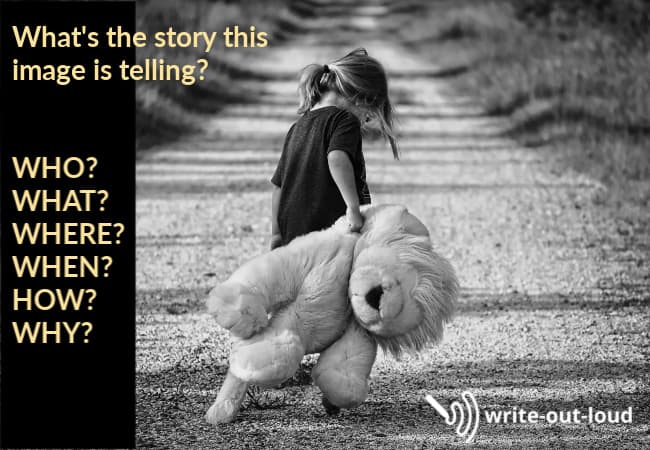
Pick any picture, like the one above, and ask:
- Who? (Who is this child? Who are her parents? Who is she running away from?)
- What? (What is she doing? What's the name of the plush toy she's carrying?)
- When? (When did this happen?)
- Why? (Why is this child out on the road by herself with her toy?)
- Where? (Where is this? Where are her parents?)
- How? (How is this story likely to end? How does this child feel?)
The response to any of these six questions will vary according to who is looking at the picture, and what they are choosing to see.
Adding "What happened before this photo/image was taken?" and "What happened afterwards?" freezes the picture as a moment in time. When you provide the "before" and "after" story you give the picture context - a setting.
For instance, let's use the picture of the child above as an example.
We could say that before the photo was taken she had thrown a temper tantrum about having to eat what she was given for lunch. Then she picked up her lion, Leo, whom she lugged everywhere, generally by the leg, and set off down the road to her Grandmother's house.
After the photo was taken , by her father, who unbeknownst to her had followed her, the child continued on her way, convinced her Grandmother would take pity on her and give her something truly delicious to eat,
Another question to ask is, how does this picture make you feel? Why?
All these questions strengthen observational skills and the ability to reason or infer.
Rather then being bound by "reality" allow "truth" to be suspended. Put the focus on developing and refining credible story telling.
1. Paired conversations
This is very simple! And it's conversational, rather than a speech. It's a beginner's activity, introducing the idea of using an image as a stimulus for speaking.
Making it paired rather than solo helps as well. It reduces the sense of pressure someone may feel, if all eyes on them, to pull something together quickly by themselves.
Choose a picture and ask your partner to tell you as much as they can about it.
Prompt if necessary to get more and draw attention to details that may have been overlooked.
When finished, swap over roles, and use another image.
2. Solo storytelling
Print off the number of images you need: one per person and one extra.
Turn them face down.
Now everybody chooses one.
Go around your group, each taking a turn to tell the story of the image they got. Allow 1 or 2 minutes per person. Be prepared to prompt, if needed.
If you're working with people new to this, encourage, and praise what is genuinely good. And keep going. Becoming fluent takes time.
3. Same picture, different story
This time all the people in your group are going to use exactly the same picture. And each one will tell a different story.
For example here are four possible story lines prompted by the picture of the little girl with her lion above.
- The girl is lost. She went with her parents for a picnic in the countryside, and while they were distracted arguing she wandered off.
- The girl lives with her family in a house at the end of a long drive. She was put out of the car by her mother for arguing with her brother and is now walking back up the drive to her home.
- This is a picture of me as a small child. I was obsessed with lions. I had large ones, small ones, pink ones and yellow ones. This is the one my Grandfather gave me. I called it King.
- This child is being exploited by her parents. She is just one of many pretty little girls whose naivety and innocence is being subverted into cash. There should be laws preventing parents from allowing their children to be used by media companies.
4. Start with one, then add another
Print off two images per person. Set a time limit of 2 minutes per story. Appoint a timer.
Turn the pictures face down.
Decide who is going first. That person chooses an image and begins to share his story, which the timer is timing.
At one minute, the timer says 'add'. The person telling the story must pick up another picture and on seeing it they must immediately incorporate it into their story. The turn finishes when the timer calls 'stop' at the end of two minutes.
Then it is the next person's turn.
What this game/activity does really well is teach the importance of transitions. How do you get from one thread to another? What makes a jump believable?
Again the more practice folk have, the better they'll get!
5. It's in the news!
You'll need an image per person. Turn them face down. Set a time of 1 to 2 minutes.
When its their turn each person chooses a picture which they then turn into the news of the day. Encourage people to have fun being the important on-the-spot reporter.
They'll need a headline and then the story covering what its about, where, when and why it happened, who was involved and how. Are there ongoing concerns? Any implications? Is there going to be a follow up?
Now get the printable to go with the activities!
I hope you have fun with these. (After you've signed in click the image to download.)
If you teach they're a great addition to any language arts program you might be putting together.
Why is this content hidden?
Some
of our content is only for write-out-loud+
members. Membership is FREE! Find
out more here,
or sign up below!
For more activities (some with freebie downloadable printables) check this page: speech/public speaking activities
PS. Here's another wonderful source of picture prompts I discovered. The New York Times has made a special feature of them and posts new ones regularly: New York Times Picture Prompts.
